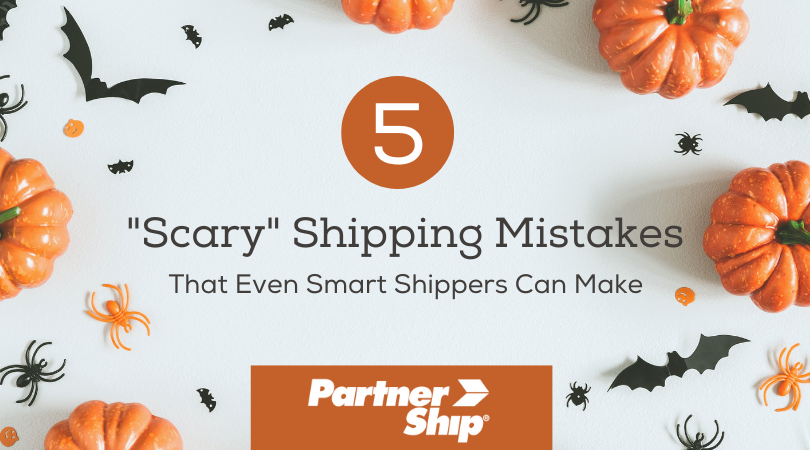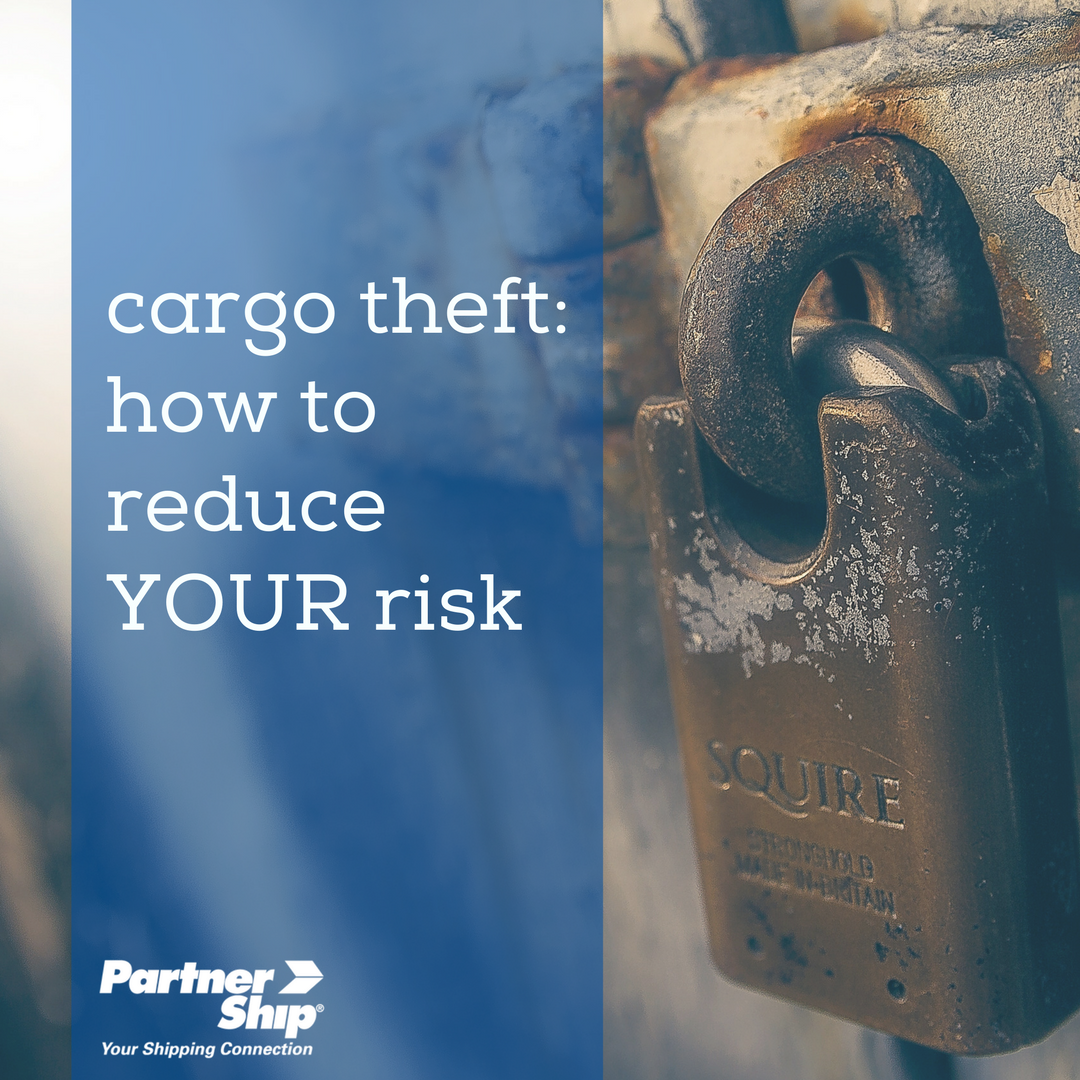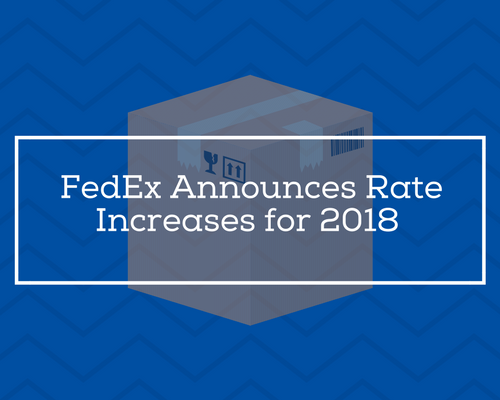the PartnerShip Connection blog
the PartnerShip Connection blog
the PartnerShip Connection blog
the PartnerShip Connection blog
the PartnerShip Connection blog
-
Truckload Rates Are Going Way Up. Are You Ready?
10/31/2017 — PartnerShip
Truckload shipping costs have been steadily climbing and are poised to go even higher because a perfect storm of events is pushing truckload rates to record highs: the looming Electronic Logging Device (ELD) mandate; the cleanup and aftermath of Hurricanes Harvey, Irma and Maria; and an already significant driver shortage that has stressed truckload capacity.
Let’s look at these factors one by one.
ELDs
An ELD is electronic hardware that connects to a truck’s engine to automatically log a driver’s hours of service (HOS) and fleets and owner-operators have until December 18th, 2017 to implement them. In a previous blog post on ELDs, we anticipated that ELDs would have an effect on pricing and freight rates caused by decreased productivity and reduced capacity.- Decreased productivity. Carriers that have implemented ELDs have reported average productivity decreases of approximately 15%. ELDs track drive-time so drivers can no longer log 400 miles when they actually drove 700.
- Reduced capacity. Some owner-operators will leave the industry because of their loss of productivity and the associated loss of income, further reducing truckload capacity.
Hurricanes Harvey, Irma and Maria
These three hurricanes hit the US within a four-week span and left massive destruction and flooding behind. These hurricanes have had a significant impact on truckload capacity. Recovery efforts required immediate emergency supplies and aid, which shifted truckload capacity to the affected areas, leaving other parts of the country with much less capacity. As recovery and rebuilding continues, truckload capacity will continue to be reduced.Existing driver shortage
This issue has been building for years. Drivers are leaving the industry as they retire or move on, and younger people are not entering the industry to replace them. The driver shortage causes truckload capacity to tighten, which pushes rates higher and higher. According to Bob Costello, chief economist for the American Trucking Associations, “We may be seeing the beginnings of a significant tightening of the driver market.” At large truckload fleets, driver turnover in the second quarter of 2017 jumped 16 percentage points to 90%; for small fleets, it was up 19 points to 85%.This combination of factors has led to the tightest truckload spot market in at least four years and freight brokers are working hard to obtain truckload capacity for shippers, but be prepared, rates are going up with no end in sight.
According to Logistics Management, experts expect the current stressed capacity situation to continue well into 2018 partially because of the productivity loss that is expected from the ELD mandate. If you’re a shipper, you should probably prepare your company management to expect higher transportation costs for the next 12 to 18 months.
During the last week of September, the number of available loads on the truckload freight spot market jumped 5.4%, the number of available trucks dropped 3.2%, and tight capacity sent the load-to-truck ratio into uncharted territory, according to DAT Solutions.
DAT said load-to-truck ratios were higher for all equipment types:
- Dry van: 7.0 loads per truck, up 10%
- Flatbed: 50.2 loads per truck, up 16%
- Refrigerated: 12.4 loads per truck, up 2%
DAT said average truckload spot rates continue to remain at two-year highs and demand for truckload capacity in September was up 15% from August, and up 80% from September 2016.
Here’s the takeaway: you will be paying more for truckload freight and it will be harder to cover your loads.
When rates go up and capacity tightens, shippers tend to look for help and reach out to freight brokers and third-party logistics companies to tap into their network of carriers, and take advantage of their expertise in truckload pricing and rate negotiation. The shipping experts at PartnerShip will work with you to cover your loads and secure the best truckload freight rate possible. We know the lanes, we know the rates and we will help you ship smarter. Contact us today to get a free quote on your next truckload freight shipment!
Click to read more... -
5 "Scary" Shipping Mistakes Even
10/26/2017 — Jen Deming

Halloween season is here! As pumpkins are being carved and candy bowls set out, it’s also just the right time to discuss some scary mistakes made by shippers. Let’s take a look at the top 5 errors commonly made in freight shipping, so we can be sure your fall business is full of treats, not tricks!
Mistake #1: Improperly Packaging Your Shipment
The first mistake freight shippers make happens even before a pick-up is scheduled and the load is in transit! Packaging your product critically protects from damages both during the move and unloading at multiple terminals. Whether you are shipping in boxes or on a pallet, it’s important that both are sized just right, and in solid condition. In fact, a box can lose up to 50% of its structural integrity after a single shipment. Too much space can allow your product to shift, which can increase opportunity for damage. Use proper cushioning and foam inserts, as well as exterior wrapping especially if you have multiple pieces. Be smart, try to group multiple units into a single load so they do not get separated during the move.Mistake #2: Bill of Lading (BOL) Errors
Another scary shipping mistake concerns paperwork errors. These include details such as entered weight, freight class, and shipping addresses provided on the BOL. All three are elements that help determine a freight rate for your shipment. Any errors made on these factors will most likely cause a discrepancy and an increase in rate due to re-weigh fees, adjusted classes, and re-delivery charges if an address is invalid or incorrect. Holding a shipment at a terminal for any length of time while determining the appropriate address can incur holding fees as well. Often, shippers will intentionally use a lower class than what is accurate for their shipment, hoping to slide by inspection. If flagged, the shipment will be billed at the higher actual class, and the shipper will be responsible for the difference. Guessing approximations for weight is risky too, because if the discrepancy is caught, the shipper will pay a re-weigh fee and the difference in weight. Having accurate details on your shipping paperwork is key in avoiding unplanned shipping costs.Mistake #3: Forgoing Additional Insurance Coverage
A third scary shipping mistake refers to insurance and liability. This becomes extremely important in the unfortunate case that your shipment should become lost or damaged. Each carrier offers limited liability on freight shipments, with the amount of coverage set at a fixed dollar amount per pound of freight determined by carrier and commodity. It is the responsibility of the shipper to prove that the shipment was in good condition and packaged correctly at pick-up. The carrier will then attempt to prove that it was not negligent or responsible for the damages incurred in transit. The final approval or denial of the claim can take some time, and you cannot always count on getting damages paid out, no matter how thorough you are. Your best line of defense is looking into supplementary insurance. Freight insurance acquired on your own or through your shipping partner provides more protection than relying on the carrier alone. Even if you do win a claim and get paid out by the carrier, liability may be limited, and you may not get the full amount of your claim. Purchasing additional insurance can help, and it’s important to understand your policy before you ship. PartnerShip understands you need peace of mind, and we offer supplementary freight insurance at a minimal additional cost as an option on all freight quotes.Mistake #4: Choosing the Incorrect Service/Accessorials
Most carriers offer different time-sensitive service levels depending on the urgency of your freight shipment. Expedited, guaranteed, time-critical, and truckload are a few. Guaranteed services help you stick to a delivery schedule with a specified on-time delivery, by either 12 PM or 5 PM. Expedited and Time-Critical services offer faster transit times and a more urgent delivery. All of these services tend to be costly, so it is important to determine what your transit time needs are, well in advance. Delivery schedules can be delayed due to inclement weather, missed pick-ups, and a heavier shipping season. Building extra time into a delivery deadline can help avoid unnecessary expedited costs that add up, especially as we head into the holidays.Another common error that shippers make is neglecting to add-in the cost of additional services, or accessorials, when they get their freight quotes. Be mindful of what is needed at the shipment's origin or destination. Does the shipper need a lift-gate at pick up? Do they have a dock? Is it being delivered to a residential location, or at a school or construction site? Chances are, there's a fee for that. It's important to learn everything you can about pick-up and delivery services that may be required, and inform your carrier or service provider before you get a rate for your freight.
Mistake #5: Leaving Inbound Shipping to Vendors
A final, costly error that many shippers make is leaving inbound shipping decisions completely up to their vendors. Commonly, businesses may allow the vendor shipping your order to arrange with their own carrier choice, marking the freight charges as "Prepaid," and then including those charges in your invoice. Taking control of your inbound shipping is one of the easiest ways to cut your shipping expenses, and working with a 3PL such as PartnerShip is one way to make sure you are saving on your inbound freight.At PartnerShip, we can provide an inbound shipping analysis by looking at what you pay and whether we can save money on your shipping costs. Our team can contact your vendors on your behalf, create updated routing requests, and inform them of your specific shipping instructions. We offer consolidated invoicing and audit all of your inbound freight bills for accuracy. Think you might be able to save on your outbound shipment? We've got your back on those, too.
Keeping your shipping costs low and your freight safe may seem intimidating, but it doesn't have to be scary. When you work with PartnerShip, our shipping experts will double check shipment details, compare your pricing, and make sure you are covered from pick-up to delivery. Take your freight shipping from spooky to stress-free and contact us for a free shipping analysis!
Click to read more... -
Cargo Theft: How to Reduce YOUR Risk
10/20/2017 — Jen Deming

Cargo at rest is cargo at risk. Freight theft is an unfortunate but all too common occurrence in the shipping world, especially as we ramp up to the holiday season. CargoNet estimates that cargo theft cost businesses $114 million total in 2016 and while the frequency of reported freight theft hasn’t necessarily increased, criminals targeting freight have evolved and become more sophisticated in their theft strategy. The improved theft tactics have resulted in more expensive losses per incident for business owners. How can shippers defend themselves? PartnerShip has created a helpful white paper explaining all you need to know about cargo theft:
- Commonly targeted commodities
What products are targeted most often and why? - Hot spots for freight theft
Where are the most common areas with high incidence of theft? What patterns and industries do we need to look at? - How cargo theft tactics are changing
What strategies and methods are being used by criminals? - What you can do to protect yourself
How can shippers deter cargo theft in warehouses, shipping yards, and during transit?
Download the free white paper: Cargo Theft: How to Reduce Your Risk
Cargo theft is a scary reality for shippers across the United States, and statistics can be overwhelming. PartnerShip is by your side through your shipment’s journey. As your trusted logistics provider, we work with vetted and reliable carriers committed to the safety of your freight. We offer tracking and follow-up through your entire shipment transit time, to be sure everything is moving smoothly and on schedule. Visit Partnership.com/WhitePapers for more helpful shipping information or give us a call at 800-599-2902!

Click to read more... - Commonly targeted commodities
-
FedEx Announces General Rate Increases for 2018
10/05/2017 — Leah Palnik

You may have heard that FedEx announced its General Rate Increases (GRI) for 2018. In the past few years, UPS has been the first of the two major small package carriers to make an announcement for the coming year, but this time FedEx is taking the lead.
Here are the announced average increases that will take effect January 1, 2018:
- 4.9% for FedEx Express domestic and international services
- 3.5% for FedEx One Rate
- 4.9% for FedEx Ground and FedEx Home Delivery
- 4.9% for FedEx Freight
As it’s important to remember every year, these averages don’t paint a complete picture. The zones you typically ship to and the services you typically use could dramatically affect the actual increase you’ll see on your invoices. Some are much higher than the average, while others are much lower or remain the same. UPS is likely to make its announcement for 2018 rates soon and if history is any indication, the averages will be similar to its competitor.
FedEx and UPS traditionally have similar average rate increases, but in the last few years their base rates have diverged a bit. Ground base rates used to be nearly identical, but in 2017 the two carriers took different increases in different zones, making it harder to compare apples-to-apples. On top of that, they also implemented slightly different approaches to dimensional (DIM) weight pricing, by using different DIM factors. As a result, looking at what would be most cost effective for you and how your rates will change has become more complicated.
Another trend that we’ve seen from UPS and FedEx is the announcements of additional changes throughout the year, separate from the GRIs. The announced averages have gone down in recent years, but these mid-year adjustments can sometimes have a larger impact.
One example of this is the new peak season surcharges that UPS is implementing for the holidays this year. UPS recently announced that it will apply a 27-cent charge on all ground residential packages during its busiest weeks in November and December. FedEx is taking a notably different approach and forgoing any additional holiday residential surcharges except for packages that are big or bulky enough to require special handling.
Both UPS and FedEx attribute charges like this to the rise of e-commerce, which has brought a sharp increase in residential shipments, particularly oversized items like furniture and exercise equipment. These kind of parcel shipments put a strain on their networks and their sorting machinery, and they've been finding ways to make up for these costs.
FedEx is also making a couple of additional moves to address the changing nature of parcel shipments in 2018. It will now apply a surcharge for shipments with third-party billing – mimicking a move that UPS made at the beginning of 2016. FedEx will also begin applying a DIM factor of 139 to all SmartPost parcels, effective January 22. UPS already applies DIM weight pricing to SurePost packages, but uses a higher DIM factor for packages 1,728 cubic inches and under.
Every year, when the new rates for UPS and FedEx are out, PartnerShip does a complete analysis so you can determine what effect it will have on your business. Subscribe to the PartnerShip Connection blog to be alerted when it’s out so you can start planning for the new year and learn how to mitigate the rising costs of small package shipping.

Click to read more...
